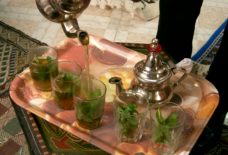The Graphic Novel Gets Some Respect
Coincidence can often be a wonderful thing, not least for event organisers. And when New York University Abu Dhabi teamed up with Abu Dhabi Music & Arts Foundation for a panel discussion on graphic novels and the Arab world, it’s unlikely they had anticipated the headlines that would emerge just weeks ahead of the event regarding these two subjects.
Middle East Comics and their Place in the 21st Century, to be held tonight in the Al Mamoura Auditorium, comes less than a month after the US blogosphere erupted in a frenzy of right-wing knee-jerks over a new Islamic comic superhero. Nightrunner, a 22-year-old French Algerian, is one of the latest additions to DC Comics’ stable, a masked crime-fighter dubbed “the Batman of Paris”.
But Qais Sedki, one of the panel participants, whose debut graphic novel Gold Ring was published last year, doesn’t like to dwell on online voices. Instead, he prefers to focus on the importance of graphic novels, and the power they can have in the region – especially the UAE.
Gold Ring features manga cartoons – illustrated by celebrated manga creators in Japan – but with the text in Arabic, to describe the story of a teenage Emirati falconer competing in a rather epic tournament. Last year it picked up the Sheikh Zayed Book Award.
“It’s a medium that really suits the population, which is fairly young,” he explains. “The older people may regard graphic novels as something for kids, but the younger crowd realise that the content can be extremely grown-up.”
And with illustrations, Sedki says you can often get away with things perhaps not acceptable in other formats. “With graphic novels, and certainly caricatures, the threshold of what we would allow ourselves to say is extended,” he argues.
While Sedki acknowledges that in Gold Ring he doesn’t attempt to push social boundaries, he has set out with some other social aims.
“One of the goals I had with this project was the idea of cultural bridging,” he says, explaining that many expatriates live for years in the UAE without ever mixing with Emiratis. “For me, it’s very important to not wait for the expat to do his or her homework, but for us to be more active in engaging.”
Sedki’s own effort to engage will come when the English-translation of Gold Ring comes out later this year, due for release at the same time as the Arabic sequel.
Through the English language edition of Gold Ring, Sedki hopes to open up a perhaps previously unknown world to its western readers. “There’s no way an expat can really see our normal lives in our houses, unless it’s in this illustrative format.”
While admirable, the concept of bridging cultures through cartoons isn’t a new one and comparisons are instantly conjured between Gold Ring and The 99, a group of superheroes based on Islamic culture and religion. Created by the Kuwaiti Naif Al Mutawa and illustrated by veterans from DC and Marvel comics, The 99 is designed to appeal to universal virtues, teaching its young readership the values of cross-cultural cooperation and acceptance.
Since it was first introduced in 2006, The 99 has exploded in popularity, and is now produced monthly and with several international editions. Al Mutawa has received numerous awards for his work and last year received a special mention by US President Barack Obama, who commended the comics for capturing the imaginations of young people through the message of tolerance.
“Dr Naif has been one of my earliest subconscious influences,” says Sedki. “I remember listening to an interview with him on BBC World several years ago and thinking ‘wow, this guy is really doing something for us.’ I revisited that, wanting to do something similar, but also different.”
The difference, perhaps, with Gold Ring, is that there’s a definite focus on Arabic readers, an audience Sedki wants to lure towards books through his graphic novels, and it’s this he hopes to talk about in the Abu Dhabi discussion.
“I think graphic novels tackle the main reason why people shy away from books,” he says, indicating that there is often a feeling among young people that books are too much of an effort compared with the instant gratification of television or video games. “I think graphic novels are that stepping stone.”
With graphic novels – especially manga – the written content is minimal. “So you have readers flipping pages, going through them at a much faster rate,” says Sedki. Most manga comics are around 200 pages long (Sedki’s Gold Ring is 152) so at the end, the readers have actually finished an entire book.
“After reading a good book, you get a buzz. You’re left longing for more. You want the next one.”
As for the next Gold Ring, Sedki won’t say exactly when it’s coming out beyond “this year”. For the regional graphic novel scene, it’s going to be a busy 12 months, with the first Middle East Film & Comic Con landing on these shores in April.
It’s clear from the likes of Sedki’s Gold Ring and The 99, and the growing graphic novel scene across the region, that the place of Middle East comics in the 21st century is one that could be making its presence felt for generations to come.
Alex Ritman
The National


